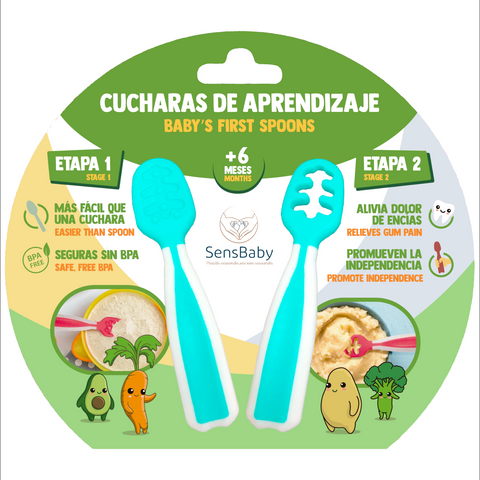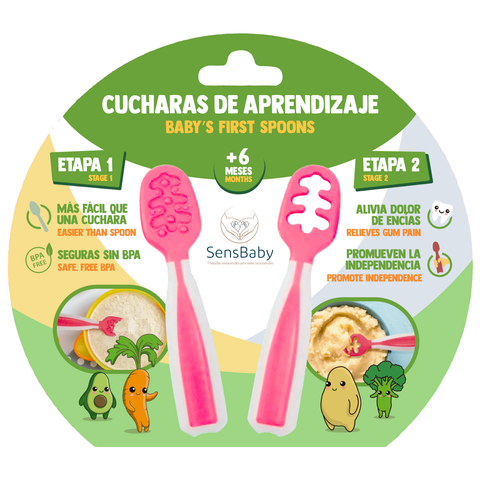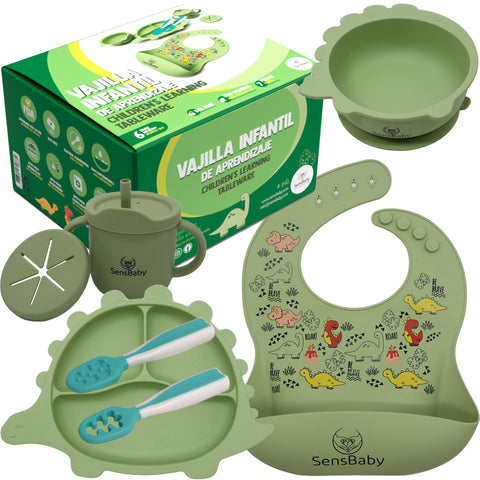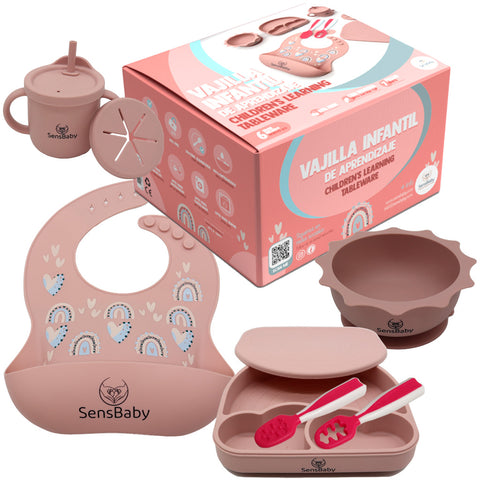Introducing Foods to Your Baby: Everything You Need to Know

Ready to begin your baby's feeding journey? Discover the basics, tips, and benefits of introducing solid foods with this comprehensive guide.
What will you find in this article?
What is Food Introduction?
Baby Food Introduction is the gradual process of introducing solid foods into a baby's diet, usually starting at 6 months, to complement breast milk or formula. It is an important milestone in a baby's development, introducing them to a variety of flavors, textures, and nutrients to promote healthy growth and development. This process can be accomplished through different methods, such as traditional complementary feeding or Baby-Led Weaning (BLW), each with its own advantages and considerations.
Introducing food to your baby is not only vital to meeting their ever-changing nutritional needs, but also to foster important motor, sensory, and social skills. It's essential to follow safety guidelines and consult with healthcare professionals to ensure a successful transition to a solid diet.
Baby Led Weaning (BLW)
Baby-Led Weaning (BLW) is an approach to introducing foods that allows the baby to explore and feed themselves, rather than being fed traditional purees.
With BLW, babies manipulate solid foods from the beginning, developing motor, coordination, and self-control skills.
Baby-Led Weaning (BLW) offers several significant advantages:
-
Fosters a positive relationship with food
By allowing babies to explore and experiment with food independently, BLW helps develop a healthy, positive relationship with food from an early age. -
Promotes autonomy
Allowing your baby to choose what and how much to eat based on their own hunger and satiety cues fosters autonomy and independence in feeding. -
Reduces the risk of choking
By allowing the baby to manipulate and chew food at their own pace, BLW can help reduce the risk of choking, as the baby learns to naturally control their food intake.
However, there are some important considerations to keep in mind:
-
Requires constant supervision
Although BLW promotes autonomy, parents or caregivers should closely supervise the baby during feedings to prevent the risk of choking and ensure the baby is eating safely.
-
Select foods appropriately to ensure safety
It is crucial to select foods that are appropriate for the baby's age and development, avoiding those that may pose a choking risk or cause allergies. -
Maintain a nutritional balance
Although BLW allows babies to explore a variety of foods, it's important to ensure they receive all the nutrients they need for growth and development. Parents should offer a variety of nutritious and balanced foods to ensure a healthy diet.
It is essential that parents be prepared to accept disorder and variety in their baby's diet, as well as to adapt to their individual developmental pace.
The Importance of the Pre-spoon
Introducing food to a baby is a crucial developmental milestone. In the context of Baby-Led Weaning (BLW), the pre-spoon plays an important role. These ergonomic spoons are specifically designed for babies who are learning to feed themselves. Here are some reasons why the pre-spoon is a valuable tool in BLW:
-
Facilitates autonomy
Although BLW encourages hand-feeding, the pre-spoon provides an additional option for those times when baby needs a little help or when foods are difficult to handle.
-
Promotes coordination
Using a pre-spoon helps your baby develop hand-mouth coordination skills, which is essential for independent feeding.
-
Gradual introduction
The pre-spoon allows for a gradual introduction of different textures and flavors, which can help your baby adjust to a variety of foods more comfortably.
-
Security
The pre-spoons are designed with smooth edges and no sharp edges to protect baby's gums and mouth.
When considering purchasing pre-spoons for BLW, it's important to look for products that are safe, easy to hold and clean, and made of high-quality materials.
Additionally, it's a good idea to choose dinnerware sets that include pre-spoons along with other utensils specifically designed for babies, such as divided plates with suction cups, non-spill cups, and bibs. These tools can make the feeding process easier and make it safer and more fun for your baby as they explore a variety of foods.
Practical Tips for Introducing Foods
Introducing solid foods to your baby is an exciting and crucial milestone in their development. Here are some practical tips for doing so safely and successfully:
-
Gradual introduction
Start with soft, easy-to-chew foods, such as fruit and vegetable purees, soft cereals, and small pieces of cooked foods.
-
Observe your baby's signs
Pay attention to your baby's hunger and satiety cues. Allow him to explore foods at his own pace and don't force him to eat if he isn't interested.
-
Offers a variety of foods
Introduce a wide variety of foods to expose your baby to different flavors and textures from an early age.
-
Constant supervision
Always supervise your baby while eating to prevent the risk of choking. Avoid giving them hard, sticky, or choking foods.
-
Maintain a calm environment
Create a calm, distraction-free environment during mealtimes so your baby can focus on eating.
-
Promotes independence
As your baby develops motor skills, allow him to grasp foods with his hands and explore different textures on his own.
-
Introduce allergenic foods with caution
If you have a family history of food allergies, consult your pediatrician before introducing allergens such as peanuts, eggs, cow's milk, wheat, fish, and shellfish.
-
Keep a routine
Establish regular meal and snack times to help your baby develop healthy eating habits.
By following these practical tips and paying attention to your baby's cues, you can make introducing food a positive and enriching experience for both of you. Enjoy this exciting journey of culinary discovery together!
Complementary Feeding: What, When and How?
Introducing solid foods is an exciting time in your baby's life, and it's crucial to do it safely and appropriately. Here's our guide on what, when, and how to do it:
What to offer?
- Soft foods: Start with soft fruit and vegetable purees, infant cereals, and protein purees like chicken or turkey.
- Appropriate textures: As your baby gets used to purees, introduce more solid foods and smaller pieces to promote chewing development.
- Nutritional Variety: Offers a wide variety of iron-rich foods, such as meat, chicken, fish, egg yolk, legumes, fortified cereals, and green leafy vegetables.
When to start?
- Signs of readiness: Wait until your baby is around 6 months old and shows signs of readiness for complementary feeding, such as being able to sit unsupported and showing interest in food.
- No rush: There's no rush to start solid foods before 6 months, as breast milk or formula is still your baby's primary source of nutrition.
How to adapt your diet?
- Step by step: Introduce one new food at a time and wait a few days before offering another. This will help you identify any allergic reactions.
- Experiment with textures: As your baby gets used to purees, you can offer soft pieces of food for chewing practice.
- Listen to the cues: Pay attention to your baby's hunger and fullness cues and respect their appetite. Don't force them to eat if they're not interested.
- Consult with a pediatrician: If you have questions or concerns about your baby's feeding, don't hesitate to talk to your pediatrician for additional guidance.
By following these tips on what, when, and how to introduce solid foods, you can help ensure your baby has a positive and nutritious experience with complementary feeding.
Benefits of a Varied Diet
Introducing a wide variety of foods into your baby's diet can have numerous benefits for their health and development. Below are some of the benefits of a varied diet:
Promotes optimal nutrition
- Getting essential nutrients: By offering a variety of foods, your baby gets a wide range of nutrients important for growth and development, including vitamins, minerals, and antioxidants.
- Encourage healthy eating habits: Exposing your baby to different flavors, textures, and colors from an early age can help them develop a preference for healthy and varied foods throughout their life.
Strengthens the immune system
- Microbiotic diversity: A varied diet can promote healthy microbial diversity in your baby's gut, strengthening their immune system and reducing the risk of disease.
- Lower risk of allergies: Introducing a wide variety of foods early on can help reduce the risk of developing food allergies later in life.
Stimulates sensory and cognitive development
- Sensory Exploration: Exposing your baby to a variety of textures, flavors, and aromas during feeding can stimulate their senses and promote sensory development.
- Palate Development: Offering a variety of foods helps expand your baby's palate and accustoms them to a wide range of flavors, which can make them more receptive to different foods as they grow.
Promotes autonomy and motor skills
- Feeding Autonomy: Allowing your baby to explore and choose from a variety of foods during mealtimes fosters independence and self-feeding skills.
- Motor Skill Development: Manipulating different foods of different textures and sizes helps develop your baby's fine and gross motor skills.
Offering a varied diet is essential for your baby's healthy growth and development. By providing a wide range of options, you are laying the foundation for healthy eating and positive eating habits throughout your child's life.
Frequently Asked Questions about Introducing Foods

Answers to the most common questions about complementary feeding, from allergies to signs of satiety.
-
When should I start introducing solid foods?
Most babies are ready to start solid foods around 6 months of age. Look for signs of maturity, such as the ability to hold their head up, sit unsupported, and show interest in food. -
What foods should I offer first?
Smooth purees and soft foods are great options to start with. You can try pureed fruits, steamed vegetables, and baby cereals. -
How can I tell if my baby has food allergies?
Observe any unusual reactions, such as rashes, swelling, or difficulty breathing, after introducing a new food. Introduce one food at a time and wait a few days before offering another new food to identify any possible allergies. -
Is it safe to practice the BLW (Baby Led Weaning) method?
Yes, BLW can be safe as long as proper food safety guidelines are followed and foods appropriate for your baby's age and developmental stage are offered. -
What are the signs that my baby is satisfied?
Your baby may show signs of fullness, such as closing his mouth, turning his head, or playing with his food instead of eating it. Respect these cues and don't force your baby to eat more than he wants. -
How can I prevent the risk of choking?
Offer foods in small, soft pieces that are easy to chew and swallow. Always supervise your baby during meals and avoid hard, sticky, or small foods that could pose a choking risk. -
What do I do if my baby refuses certain foods?
It's normal for babies to be picky eaters. Continue to offer a variety of foods and maintain a positive environment during mealtimes. It may take time for your baby to accept new tastes and textures. -
How can I ensure my baby is getting the right nutrients?
Offer a variety of nutritious foods, including fruits, vegetables, proteins, and whole grains. Consult a pediatrician or pediatric nutritionist if you have concerns about your baby's diet. -
Should I continue breastfeeding or bottle-feeding while introducing solid foods?
Yes, breast milk or formula will continue to be your baby's primary source of nutrition during the first few months of introducing solid foods. Continue breastfeeding or bottle-feeding as recommended by your pediatrician. -
How can I make mealtimes a positive experience for my baby?
Make mealtimes fun and enjoyable. Sit with your baby during meals, talk to him or her, and praise his or her efforts. Allowing your baby to explore and experiment with food can also help foster a positive relationship with food.
Recipes for Babies
Here are some delicious and nutritious recipes to help you start your baby's complementary feeding and stimulate his or her palate:
Apple and Pear Puree:
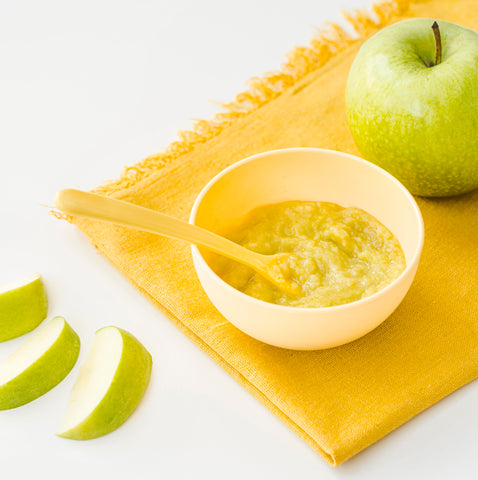
Banana and Avocado Smoothie:
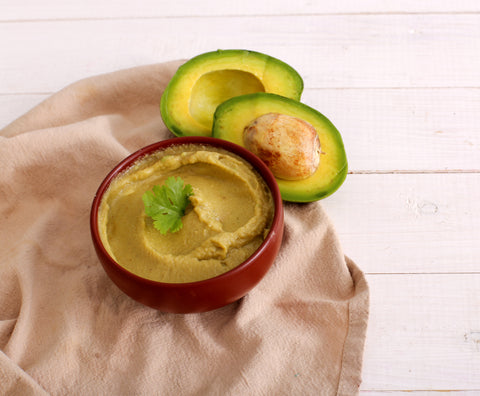
- Ingredients: Ripe banana, avocado, breast milk or formula.
- Instructions: Blend the banana and avocado in a bowl. Add a little breast milk or formula and blend until smooth.
Pumpkin and Carrot Puree:

- Ingredients: Pumpkin, carrots, olive oil.
- Instructions: Peel and chop the squash and carrots. Steam until tender. Blend with a little olive oil until smooth.
Quinoa and Spinach Porridge:
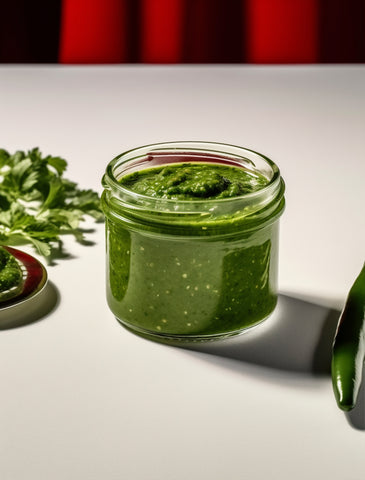
- Ingredients: Quinoa, fresh spinach, vegetable broth.
- Instructions: Cook the quinoa in vegetable broth according to the package instructions. Add chopped fresh spinach and cook until wilted. Blend until smooth.
Plum and Mango Compote:

- Ingredients: Ripe plums, mango, cinnamon (optional).
- Instructions: Peel and pit the plums and mango. Cut into small pieces and cook until soft. Add a touch of cinnamon if desired. Blend until smooth.
Chickpea and Carrot Puree:
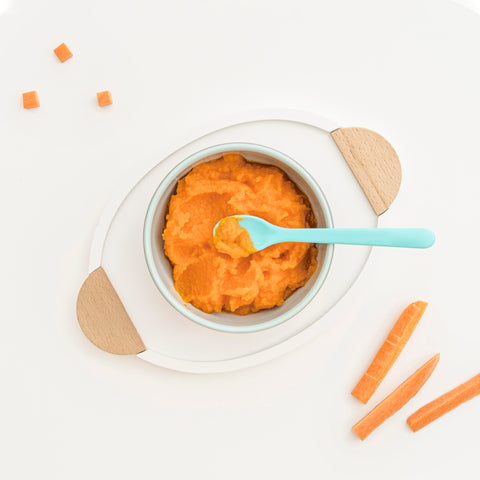
- Ingredients: Cooked chickpeas, carrots, olive oil.
- Instructions: Steam the carrots until tender. Mix with the cooked chickpeas and a little olive oil. Blend until smooth.
Mango and Yogurt Smoothie:
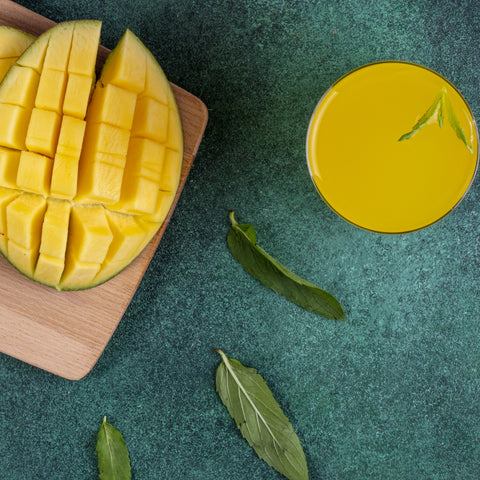
- Ingredients: Ripe mango, natural yogurt, breast milk or formula.
- Instructions: Blend the mango and yogurt in a blender until smooth. Add a little breast milk or formula to adjust the consistency if needed.
These recipes are just a few ideas to get you started with your baby's complementary feeding. Remember to consult with a pediatrician or nutritionist before introducing new foods into your baby's diet and make sure they are appropriate for their age and stage of development.
Preparation and Safety
When it comes to introducing food to your baby, preparation and safety are key to ensuring a positive and risk-free experience. Here are some important tips:
Food Preparation:
- Wash all fruits and vegetables thoroughly before preparing them.
- Cook food until tender and easy to mash.
- Peel and pit fruits such as apples, pears, and peaches to avoid choking hazards.
- Crush or cut food into small pieces appropriate for the baby's age.
- Avoid adding salt, sugar, honey or other seasonings during preparation.
Feeding Safety:
- Always supervise your baby while eating and keep your attention on him throughout the meal.
- Make sure your baby sits upright while eating, preferably in a high chair with a safety harness.
- Avoid distractions during eating, such as television or electronic devices.
- Never leave your baby alone while eating, even for a brief moment.
- Keep small objects, such as toys and utensils, out of baby's reach during feeding to avoid the risk of choking.
Gradual Introduction:
- Introduce one new food at a time and wait a few days before offering another. This will help you identify any allergic reactions.
- Start with soft, easy-to-blend foods, such as fruit and vegetable purees.
- As your baby gets used to eating solids, you can increase the variety and texture of foods.
By following these preparation and safety tips, you can provide your baby with a safe and enjoyable feeding experience while they explore new flavors and textures. Remember that every baby is unique, so always follow your pediatrician's instructions and trust your instincts as a parent.
Next Steps
Once your baby has begun introducing solid foods, it's important to move forward gradually and adaptively. Here are some next steps to consider:
Increased Variety:
- Introduce a wide variety of foods so your baby can experience different flavors, textures, and nutrients.
- Include iron-rich foods, such as meats, legumes, and fortified cereals, to meet growing nutritional needs.
More Complex Textures:
- As your baby gets used to eating solid foods, you can begin offering more complex textures, such as soft pieces of fruits and vegetables, cooked pasta, and minced meats.
- This helps develop chewing skills and improves hand-mouth coordination.
Independent Feeding:
- Encourage autonomy by allowing your baby to explore foods and practice grasping them with their fingers.
- Offer foods in chunks that are easy to hold, such as pieces of soft fruit or cooked vegetables.
Offer Water:
- Serve water in a small cup or with a straw to help your baby learn to drink independently.
- Offer small sips of water during meals to aid digestion and stay hydrated.
Continuous Security:
- Continue to closely supervise your baby during feedings to prevent the risk of choking.
- Make sure the foods are safe and appropriate for your child's age and chewing abilities.
- Keep small and dangerous objects out of reach during feeding.
Discover everything you need to know about introducing foods to your baby and prepare for this exciting stage of development. Let's begin this culinary adventure together!


